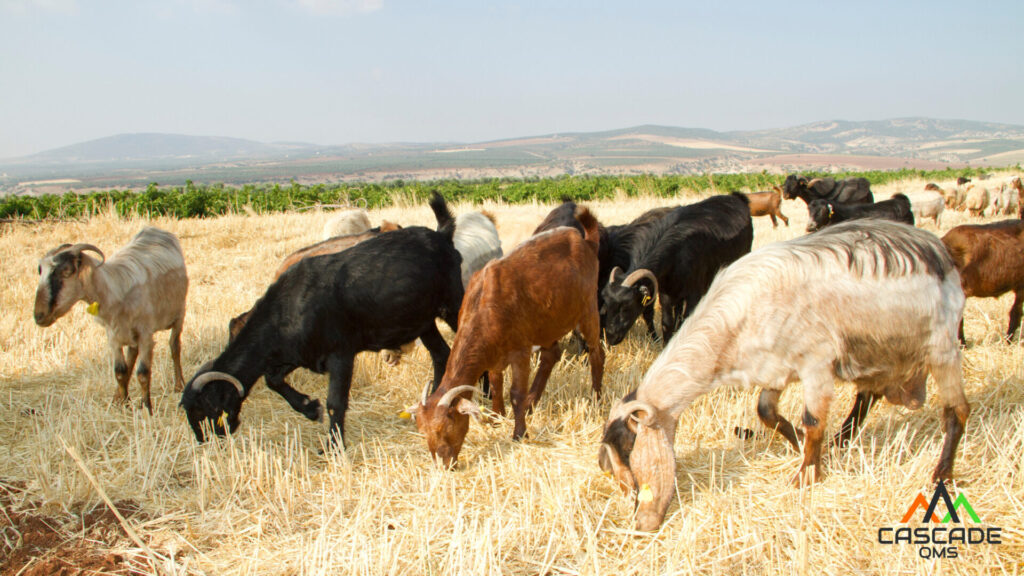In the world of land management, the most effective tools don’t always have engines. Across the U.S., contractors are putting down the machinery and leaning into something a bit more… old-school. With hooves instead of hydraulics, targeted grazing has become a powerful, environmentally conscious approach to vegetation control—especially for energy-sector projects.
From California’s dry hills to the grassy utility corridors of the Midwest, using goats and sheep to clear land isn’t just a trend. It’s a strategic shift. A recent study from the University of California found that properly managed grazing can reduce fire-prone vegetation by up to 60%. At the same time, the American Solar Grazing Association reports a 200% increase in demand for livestock-based clearing services over the last five years.
What Exactly Is Targeted Grazing?
At its core, targeted grazing is the practice of using livestock—usually goats or sheep—to reduce overgrowth in specific areas. Unlike open grazing, this is a controlled process. Fencing, rotational patterns, and site-specific plans guide the animals to do the job in a precise, effective manner.
You’ll find targeted grazing in places like:
- Transmission line corridors
- Pipeline rights-of-way (ROW)
- Solar and wind energy sites
- Reclamation zones
- Sloped or fire-prone land where machinery can’t safely operate
Why Energy Contractors Are Paying Attention
Energy companies are under pressure to meet both safety and sustainability benchmarks. For some, it’s ESG reports. For others, it’s wildfire risk. Either way, targeted grazing checks several boxes:
- Lowers vegetation quickly without chemicals
- Reduces erosion on uneven terrain
- Boosts biodiversity and pollinator health
- Reaches remote or delicate areas safely
- Demonstrates sustainable practices to regulators and stakeholders
It’s no surprise that companies like PG&E, Energy Transfer, NextEra, and Enbridge are encouraging contractors to explore these methods. But just because it’s nature-powered doesn’t mean it’s a compliance-free zone.
Compliance: Still Part of the Job
Using animals doesn’t exempt you from paperwork. In fact, many of the same rules that apply to equipment-based contractors still apply here. If you plan to work for major energy providers, chances are you’ll need to pass through systems like ISNetworld®, Avetta®, or Veriforce®.
Typical requirements include:
- Documented safety procedures for livestock handling and transport
- Valid insurance showing coverage for animal-related liability
- Environmental protocols and biosecurity plans
- HSE (Health, Safety & Environmental) questionnaires
- OSHA logs and annual compliance updates
How Cascade QMS Helps Grazing Contractors
We work with all kinds of land service contractors—from heavy equipment operators to goat herders. No matter the method, if you’re managing vegetation for energy clients, we can help you get approved and stay in compliance.
Our services include:
- ISNetworld®, Avetta®, and Veriforce® account setup
- Written safety programs customized for grazing operations
- Insurance documentation formatting and submission
- HSE questionnaire completion
- Ongoing support and update reminders
The Opportunity Is Growing
The targeted grazing market is projected to grow nearly 10% year over year through the next decade. Why? Because it’s effective, eco-friendly, and often more affordable than traditional methods. But growth brings scrutiny—and that means contractors need to be ready to prove they’re up to code.
At Cascade QMS, we help you get there. Fast. Efficient. No stress.
👉 Want to get started? Explore our ISNetworld Management Plan or contact us today. We’ll walk you through exactly what’s required based on your clients and your grazing operations.

